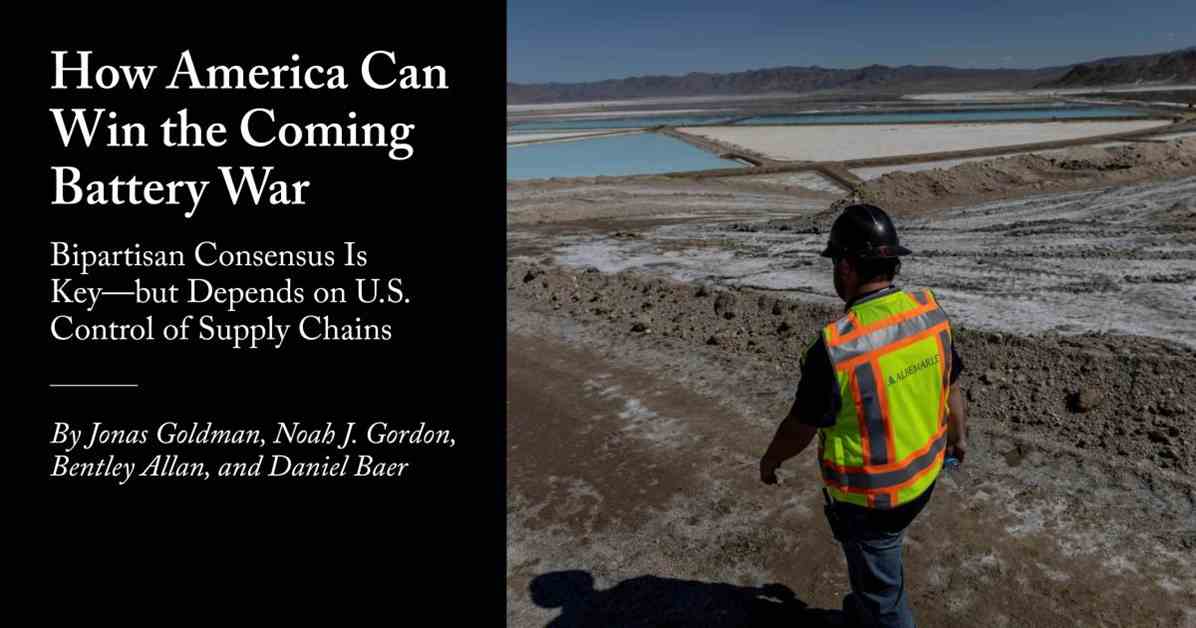How America Can Win the Coming Battery War
The United States is undergoing a green industrial revolution, thanks in part to the Inflation Reduction Act of August 2022. This legislation, aimed at addressing climate change, has sparked a significant increase in investment in U.S. clean energy manufacturing. With investment in clean energy manufacturing soaring from $4 billion in the first quarter of 2022 to $17 billion in the first quarter of 2024, the U.S. battery production is set to skyrocket from 257 gigawatt-hours in 2023 to over 1,000 gigawatt-hours by 2030. This surge in battery production is expected to fuel the production of ten million electric vehicles annually in the United States.
Interestingly, the IRA has disproportionately benefited workers in politically conservative regions, with a staggering 80 percent of announced U.S. battery production capacity slated for Republican-held congressional districts. This strategic move has led to a shift in Republican support for manufacturing low-carbon goods, with many lawmakers recognizing the economic benefits the IRA brings to their districts.
However, the looming challenge for the United States lies in securing the raw materials needed for battery production. By 2030, the world is predicted to face shortages of key minerals like graphite, nickel, and lithium, crucial for electric vehicle manufacturing. China, which currently dominates the market for these minerals, poses a significant threat to the U.S. energy transition. To mitigate this risk, the U.S. must mobilize significant funding to extract and process minerals domestically and with the help of allies like Australia and the United Kingdom.
To establish a robust electric vehicle supply chain and reduce reliance on China, the U.S. and its allies need to invest a substantial $920 billion by 2035 in building supply chains for critical minerals. Creating public funds, negotiating agreements with other countries, and supporting early-stage battery-making projects are crucial steps to ensure the U.S. remains competitive in the global decarbonization race. By taking proactive measures now, the United States can secure its position in the growing market for electric vehicles and renewable energy, paving the way for a cleaner and more sustainable future.

















